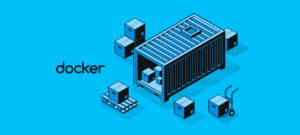In the world of DevOps, where rapid development and deployment are the norm, ensuring the reliability, performance, and security of software systems is paramount. Continuous Monitoring, a key practice in the DevOps methodology, plays a crucial role in maintaining the health and stability of applications and infrastructure throughout the software development lifecycle. In this article, we’ll explore the importance of continuous monitoring in DevOps and how it empowers teams to detect and resolve issues proactively, improve decision-making, and deliver better software products to users.
What is Continuous Monitoring?
Continuous Monitoring is the process of collecting, analyzing, and acting upon real-time data and metrics from software systems, infrastructure, and applications. It involves the automated monitoring of various performance indicators, such as system health, application performance, security vulnerabilities, and user experience, to identify anomalies, deviations, and potential issues that may impact the reliability and functionality of the system.
The Importance of Continuous Monitoring in DevOps
1. Early Detection of Issues
Continuous Monitoring enables early detection of issues and abnormalities in software systems, allowing teams to identify and address potential problems before they escalate into critical incidents or outages. By monitoring key performance indicators and metrics in real-time, teams can proactively detect issues such as performance degradation, resource bottlenecks, security vulnerabilities, and abnormal behavior, minimizing downtime and improving system reliability.
2. Improved Decision-Making
Continuous Monitoring provides valuable insights and data-driven intelligence that empower teams to make informed decisions about software development, deployment, and operations. By analyzing trends, patterns, and historical data, teams can identify areas for optimization, prioritize tasks and initiatives, allocate resources effectively, and make strategic decisions to enhance system performance, scalability, and security.
3. Faster Incident Response and Recovery
In the event of an incident or outage, Continuous Monitoring facilitates rapid incident response and recovery by providing real-time visibility into system health and performance. Monitoring alerts and notifications enable teams to quickly identify and diagnose issues, assess the impact, and implement remediation measures to restore service availability and minimize downtime. By streamlining incident response processes and automating remediation actions, Continuous Monitoring accelerates the resolution of incidents and enhances system resilience.
4. Continuous Improvement and Optimization
Continuous Monitoring fosters a culture of continuous improvement and optimization within DevOps teams by providing feedback loops and metrics-driven insights into system behavior and performance. By continuously monitoring and analyzing data, teams can identify areas for optimization, experiment with new approaches and technologies, measure the impact of changes, and iteratively improve system reliability, performance, and efficiency over time.
Implementing Continuous Monitoring in DevOps
To implement Continuous Monitoring effectively in DevOps, consider the following best practices:
- Define Key Performance Indicators (KPIs): Identify and define relevant KPIs and metrics that align with business objectives and performance goals.
- Automate Monitoring and Alerting: Automate the collection, analysis, and visualization of monitoring data using monitoring tools and platforms. Configure alerts and notifications to proactively notify teams about critical events and anomalies.
- Integrate Monitoring into CI/CD Pipelines: Integrate monitoring and observability tools into CI/CD pipelines to automate testing, deployment, and monitoring processes seamlessly.
- Collaborate Across Teams: Foster collaboration and communication between development, operations, and security teams to ensure holistic monitoring and visibility across the entire software development lifecycle.
- Continuously Evaluate and Improve: Continuously evaluate the effectiveness of monitoring strategies, tools, and processes, and iterate on them to adapt to evolving requirements and challenges.
Conclusion
Continuous Monitoring is a fundamental practice in DevOps that enables teams to maintain the health, reliability, and performance of software systems in today’s dynamic and complex environments. By continuously monitoring key performance indicators, detecting anomalies, and acting upon real-time insights, DevOps teams can proactively identify and resolve issues, improve decision-making, and deliver better software products to users. Embracing Continuous Monitoring as a core tenet of DevOps enables organizations to enhance system resilience, optimize performance, and drive continuous improvement and innovation in software development and operations.





